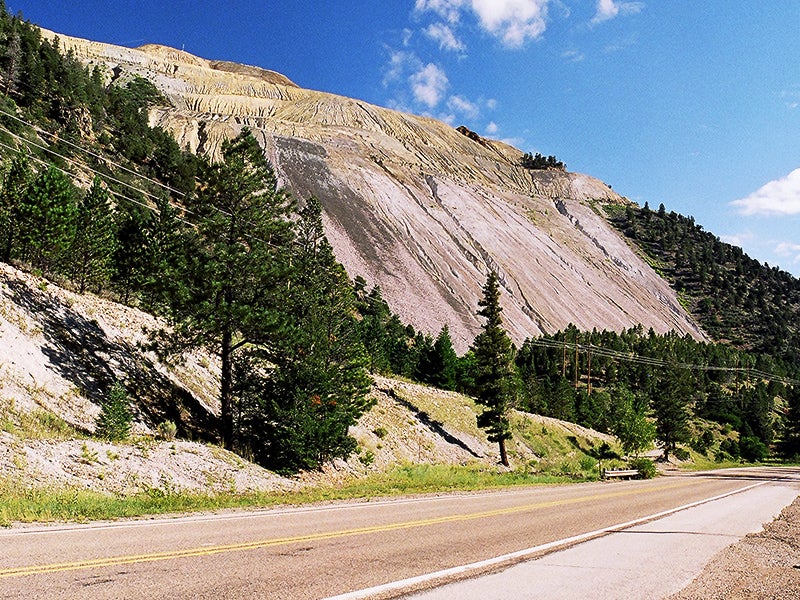Superfund Super-Polluters: Chevron Molycorp Mine, New Mexico
The Chevron Molycorp mine has tainted water supplies in northern New Mexico for decades, and taxpayers could end up on the hook for a large portion of the clean-up costs.

This page was published 9 years ago. Find the latest on Earthjustice’s work.
“Not only do I now rarely take clients to the Red River to fish, I no longer go to the Red River on my own to fish for pleasure,” says Taylor Streit, a well-known fly fisherman and guide in the Taos, New Mexico area. Streit has been fishing and guiding on the Red River, a tributary of the Rio Grande that flows right past the massive Chevron Molycorp mine, since the 1960s.
“Although the ‘Moly Mine’ had a negative influence on the Red for a long time, the rich river had held its own until the intense ore extractions of the ’80s. Then, in the blink of an evolutionary eye, fish populations went to almost nothing in the smelly soup. The destruction was so devastating that even years later the river is still but a tainted blue–green version of its former self,” Taylor adds.
The Chevron Molycorp molybdenum mine dates back to the 1920s. The mine’s open pit—and the 360 million tons of acid-generating waste rock excavated from it—were left un-reclaimed when open pit operations ceased and the mine returned to underground operations in 1983. For decades, acid mine drainage percolated through the rock and infiltrated both surface and groundwater, contaminating drinking water wells in the area and overwhelming the ability of the Red River to maintain a viable ecosystem.
The mine pit and waste rock dumps now scar more than a thousand acres of the Red River watershed between Questa and the town of Red River in northern New Mexico. After years of pressure from community groups, including Amigos Bravos, the mine was placed on the National Priorities List as a Superfund site in 2000, and a final Record of Decision (ROD) was issued in 2010. In June 2014, Chevron announced that it was permanently shutting down the mine.
The Superfund ROD requires cleanup of the site at a cost of $500 to $800 million. But there are only $167 million in financial assurances posted by the mine, leaving hundreds of millions of dollars in potential liability for tax payers. Financial assurances include bonds, insurance or other financial mechanisms that ensure that the companies most likely to make toxic messes will be able to pay to clean them up if something goes wrong. Represented by Earthjustice, Amigos Bravos and other conservation organizations just won a major court ruling that requires the EPA to make rules that will hold companies accountable for the full cost of cleaning up their toxic messes.
Only 15 miles north of Taos, the Red River would be an ideal place for the area’s numerous fly fishing guides, including Streit, to take clients. The contamination in the river and the impacts on aquatic life have forced these guides to take their clients much further afield, costing both them and their clientel more money and time. Requirements for adequate financial assurances to clean up the mining mess on the Red River would greatly benefit the river and folks like Streit who depend on it for their livelihoods.
Streit often reminisces about his days fishing on the Red River before the mine pollution decimated fish populations. “There were deep, shaded holes for big trout and gravel beds for spawning. What a beautiful wild place, as two-foot-thick ponderosas spread shade, vanilla scent and soft needles over the oasis,” Streit says. “The fishing was wild, and every pool gave up a trout from one to three pounds.”
Now that the mine is closed there is hope that the area can be reclaimed and that the Red will once again flow clean and clear. Of course, that all depends on strong EPA rules to make sure there are funds in place do a thorough and complete cleanup.
Learn more about how Earthjustice is working in court and with the EPA to finally make sure industrial polluters are on the hook for the full costs of the contamination they create.